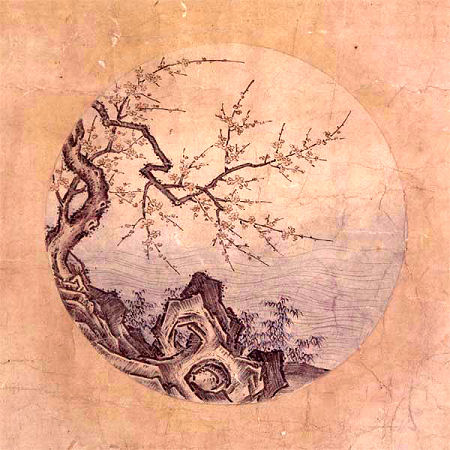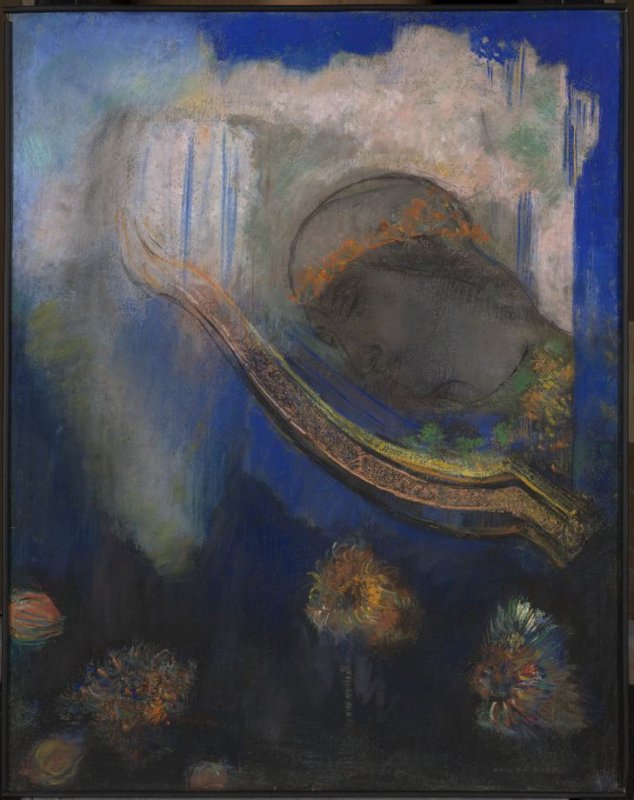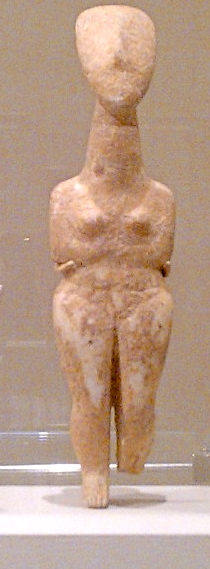
LIFE AS MYTH
![]()
JOURNAL
![]()
JOURNAL 2013
A living myth
Seven year cycle
![]()
AUTUMN 2013
A living myth
The power of unanswered prayer
The deep uncanny mine of souls
![]()
LIFEWORKS
![]()
ATLAS
![]()

AUTUMN 2013
THE DEEP UNCANNY MINE OF SOULS
Picture Nine: Reaching the source. Ten Oxherding Pictures. Attributed to Shubun (n.d.) Japan, Muromachi period. Handscroll, ink and light colors on paper. 11/01/13.
Orpheus. Odilon Redon. 1905. The Munch Museum. Fine Arts Museum of San Francisco.
10/31 - 11/02/13
When I let go of what I am, I become what I might be.
Lao Tzu (604-531 B.C.), philosopher, author of the Tao Te ChingFirst, a story.
Orpheus (meaning the darkness of night) was a poet whose music was so enchanting that he could charm all creation when he sang and played his lyre. Eurydice (meaning wide justice) was an oak nymph and the daughter of the sun-god Apollo.
Eurydice and Orpheus fell deeply in love. On their wedding day, Eurydice danced across a meadow while Orpheus played on his lyre. During the dance, a viper bit her heel and she died. The loss of his bride was so profound that Orpheus descended into the underworld to beg the gods to release her, petitioning Hades and Persephone through song. His music was extremely sorrowful, the story says, bringing tears to the eyes of the gods.
Hades agreed to return Eurydice to Orpheus on one condition: she must walk behind her husband for the entire journey out of the underworld and Orpheus must not look on her face until they had both exited. Despite the warning, just as they neared the surface, Orpheus turned around to make sure that Eurydice was still following him. When he turned, she vanished and Orpheus returned to the land of the living alone.
Why? That's the philosophical question. Why did he turn? Didn't he know what would happen? The most common explanation was that he loved her so completely that he could not risk returning to the world without her. He had to know she was still there, that she was following him. In other words, his heart overruled his reason and he turned to check even though, in doing so, he lost her forever.
That explanation aligns with a traditional narrative structure, one that is deeply embedded in our world. Classical storytelling focuses on male individuation and conquest, and identifies women as trophies, the ultimate reward of the hero. However, I think there could be something far more interesting going on in this particular myth, if we bring a little Zen to it. And a little bit of Rilke.
That was the deep uncanny mine of souls, writes Rainer Maria Rilke as he opens "Orpheus, Eurydice and Hermes," a poem based on this myth. With Rilke and through his poem, we descend into the land of the dead, arriving at the intersection he creates between the death of an old myth and the birth of a new one. That intersection is the point where Eurydice and Orpheus see each other. It is not just that Rilke reimagines the myth of Eurydice and Orpheus, he also radically reimagines the meaning of their parting.
At her death, Eurydice, no longer the bride of Orpheus, becomes instead his muse. Consider. After her death she inspires music of such exquisite beauty that all creation stills to listen and the gods weep. In other words, her absence provides access to greater creative depths than Orpheus had heretofore achieved on his own.
Eurydice, as Rilke describes her, has gone through an irreversible transformation, one that was taking her to an existence far richer than the one she ever knew with Orpheus. The poet writes,
She was no longer that woman with blue eyes
who once had echoed through the poet’s songs,
no longer the wide couch’s scent and island,
and that man’s property no longer.
She was already loosened like long hair,
poured out like fallen rain,
shared like a limitless supply.
She was already root.Eurydice had reached the source. She was no longer able to follow behind and in her husband's footsteps. She was whole; she was subject.
Why? We return to the philosophical question. Why did Orpheus turn? Didn't he know what would happen? I believe that Rilke answers yes -- on some level, Orpheus knew the result of violating the prohibition against looking and that is what he chose. He wanted to lose her. The only way that could happen was to break the one condition that Hades made. I believe that Hades gave Orpheus a choice, already understanding the transformation in Eurydice and knowing in advance how Orpheus would choose.
Eurydice was now subject and Orpheus, as artist, needed her to remain object, muse, forever a reflection of his desire, never subject, never root.
Female. Cycladic, Early Cycladic II. ca. 2700-2200 BC. Metropolitan Museum of Art, New York.
Typical of pieces from this period, the form presents without hands, eyes, ears or a mouth. The artist has stripped the representation down to the sense of smell, her nose the only discernible facial feature.
Smell is our most primitive sense, located in the area of the brain linked to emotion, memory and creativity. Unlike the other four senses, smell functions out of the olfactory cortex found in the intermediate brain (old mammalian) or Limbic system. With the addition of broad hips and rolls of abdominal flesh, this female becomes emblematic of primitive man's understandings of the feminine ideal, as an object of procreation.



